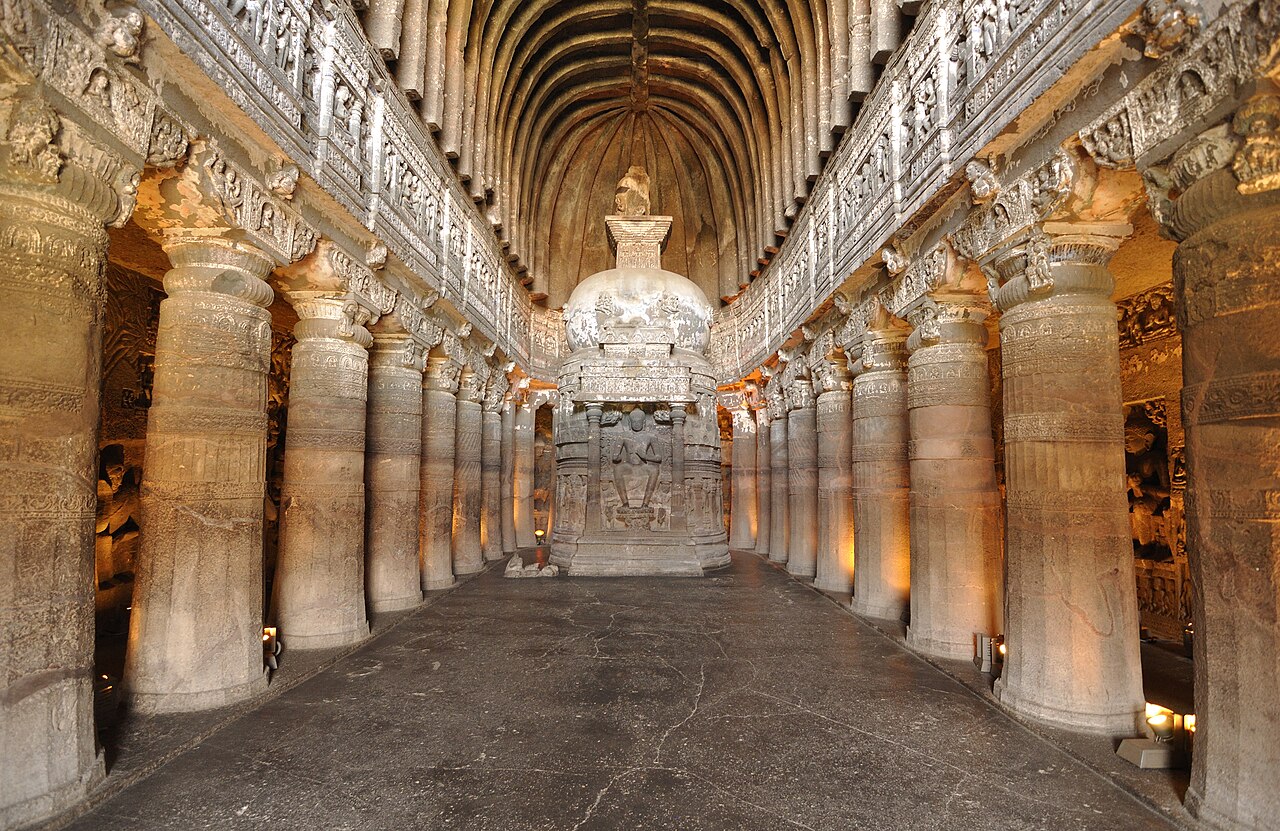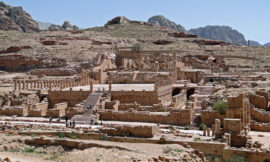The Ajanta Caves, located in Maharashtra, India, are a breathtaking testament to ancient Indian art and architecture. Carved into the rocky cliffs of the Waghora River valley, these Buddhist cave temples date back to the 2nd century BCE to the 6th century CE, spanning several centuries of India’s rich cultural and religious history. The caves were rediscovered in the early 19th century, hidden beneath layers of jungle growth, and have since been recognized as a UNESCO World Heritage Site.
The Ajanta Caves consist of a total of 30 rock-cut caves, each uniquely adorned with exquisite sculptures, intricate murals, and stunning architectural features. These caves served as monastic retreats, meditation halls, and worship centers for Buddhist monks and pilgrims, providing a spiritual sanctuary amidst the natural beauty of the surrounding landscape.
One of the most remarkable aspects of the Ajanta Caves is the intricate artwork that adorns their interiors. The walls and ceilings of the caves are adorned with elaborate frescoes and murals depicting scenes from the life of the Buddha, Jataka tales (stories of the Buddha’s previous lives), and various other Buddhist deities and symbols. These paintings are executed in vibrant colors using natural pigments derived from minerals and plants, and they showcase the skill and craftsmanship of ancient Indian artists.
The Ajanta Caves are also renowned for their magnificent sculptures, which adorn the facades, doorways, and interiors of the caves. These sculptures depict various Buddhist deities, bodhisattvas, and other religious figures, as well as scenes from Indian mythology and everyday life. The sculptures are characterized by their intricate details, graceful poses, and serene expressions, capturing the essence of Buddhist philosophy and artistry.
In addition to their artistic and religious significance, the Ajanta Caves also provide valuable insights into ancient Indian civilization and culture. The caves contain inscriptions in Brahmi and Devanagari scripts, as well as architectural features that reflect the influence of different dynasties and ruling powers, including the Satavahana, Vakataka, and Gupta empires.
The layout and design of the Ajanta Caves are also remarkable, with each cave meticulously carved and arranged to create a sense of harmony and balance. The caves are organized into several groups, with each group consisting of multiple caves arranged around a central courtyard or veranda. This layout reflects the traditional architectural principles of Indian temple design and provides a sense of coherence and unity to the entire complex.
Visitors to the Ajanta Caves can explore the various caves at their own pace, marveling at the intricate artwork, admiring the stunning natural surroundings, and reflecting on the spiritual significance of these ancient monuments. The caves are also a popular destination for scholars, historians, and art enthusiasts, who come to study the rich cultural heritage of ancient India and appreciate the timeless beauty of its artistic achievements.
In conclusion, the Ajanta Caves are a priceless treasure of Indian civilization, a testament to the ingenuity, creativity, and spiritual devotion of ancient Indian artists and craftsmen. With their stunning artwork, magnificent sculptures, and serene ambiance, the caves continue to inspire wonder and awe in all who visit, serving as a timeless reminder of India’s rich cultural heritage and enduring legacy.



